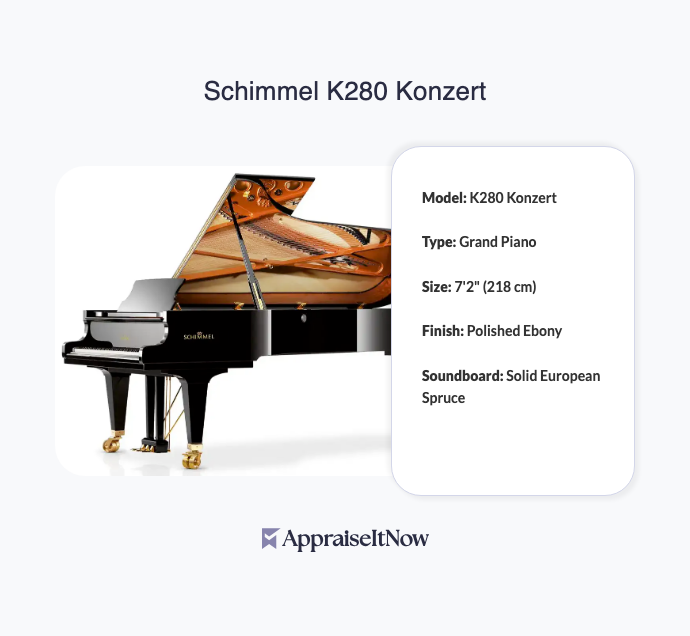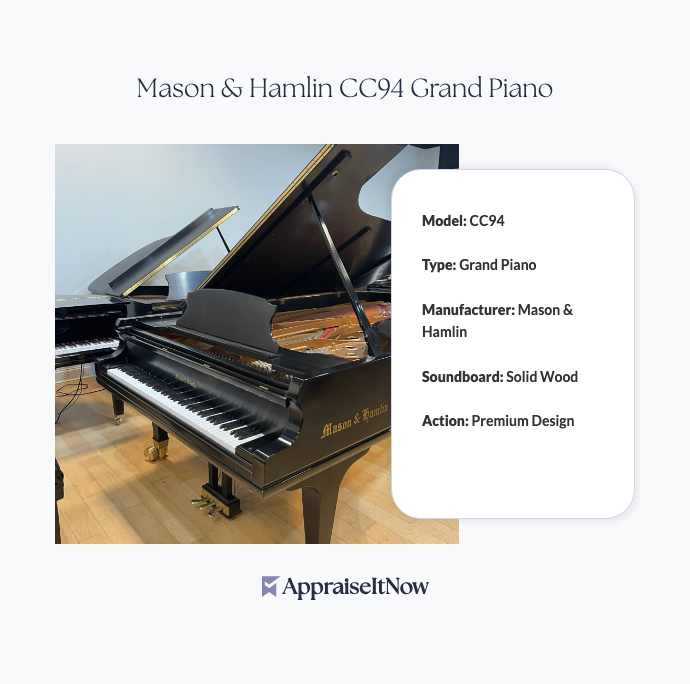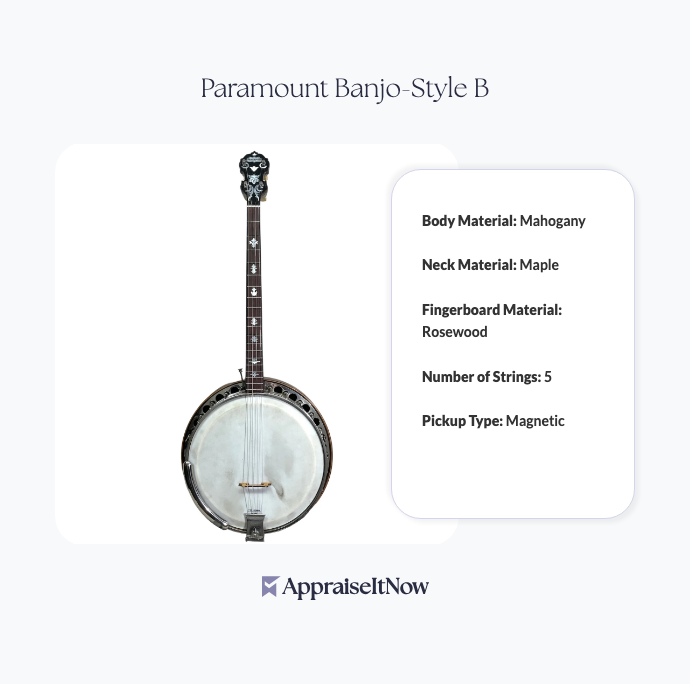<h1>How to Get Your Conn 88H Symphony Trombone Appraised</h1>
<p>The Conn 88H Symphony Trombone stands as one of the most respected professional-grade brass instruments ever manufactured. Whether you're considering selling an inherited instrument, evaluating insurance coverage, or simply curious about what your trombone is worth, understanding how to obtain a proper appraisal ensures you receive accurate valuation backed by expert credentials. Current market estimates place the Conn 88H in the <strong>$1,500 to $2,500 range</strong>, though condition, age, and provenance can shift this considerably.</p>
<h2>Why the Conn 88H Remains Highly Sought After</h2>
<p>First introduced in 1937, the Conn 88H earned its reputation through decades of stellar performance in symphonic and orchestral settings. Musicians consistently choose this model for its rich, resonant tone and exceptional responsiveness, qualities that haven't diminished even as newer instruments have entered the market. The 88H's durable brass construction combined with its intricate valve system for precise intonation makes it equally effective for classical masterpieces or jazz standards, explaining why accomplished trombonists continue to prize these instruments.</p>
<p>The trombone itself has a fascinating history—many collectors ask if Mozart used trombones, and the answer reveals how these instruments gained prominence during the Classical era. However, the Conn 88H's engineering represents a distinctly modern refinement of that tradition, refined through competitive performance demands of the 20th century. Understanding this context helps explain why professional musicians still seek out these vintage models rather than accepting newer alternatives.</p>
<div class="callout tip"><p><strong>Collector's Insight</strong></p>
<p>Original manufacturing dates and serial numbers significantly impact Conn 88H values. Instruments from the late 1930s through 1950s often command premium pricing among serious musicians.</p></div>
<h2>Key Factors That Influence Your Conn 88H's Appraisal Value</h2>
<p>When a qualified appraiser evaluates your Conn 88H, they examine multiple dimensions beyond basic appearance. The valve system's mechanical condition directly affects playability and value—smooth, responsive valve action with no sluggishness indicates proper maintenance. Similarly, the bore diameter and slide geometry remain crucial specifications that experienced appraisers verify, as these technical details distinguish the 88H from lesser models.</p>
<p>Condition becomes paramount in musical instrument appraisal. Unlike many collectibles where age creates automatic premium value, vintage trombones must still function musically. Dents, cracks, or valve issues that compromise performance significantly reduce market worth. Professional appraisers assess whether any repairs have been made and whether those repairs used period-appropriate materials and techniques that preserve the instrument's original character.</p>
<p>Documentation matters considerably—if you can provide original case materials, mouthpieces, or manufacturer paperwork, these additions enhance your appraisal substantially. When exploring <a href="/types/memorabilia-and-collectibles">appraisals for memorabilia and collectibles</a>, condition documentation and provenance history prove equally valuable for brass instruments as they do for other specialized items.</p>
<h2>Understanding Your Trombone's Age and Production Timeline</h2>
<p>How to tell the age of a Conn trombone requires understanding serial numbering systems. Conn used specific numbering patterns that reveal production dates with reasonable precision. You can cross-reference your instrument's serial number with manufacturer records or established guides within the brass instrument community to confirm when your 88H was manufactured. This dating process directly impacts valuation—instruments from different production eras command varying market prices based on materials used, manufacturing techniques, and historical significance.</p>
<p>The question "What is the history of the Conn trombone?" illuminates why this brand achieved legendary status. Founded in 1899, Conn became synonymous with quality brass manufacturing during an era when American instruments competed successfully against European makers. The 88H emerged during the company's golden age of innovation, incorporating design refinements that addressed professional musicians' feedback.</p>
<div class="callout note"><p><strong>Valuation Detail</strong></p>
<p>A 1940s Conn 88H in excellent condition might appraise at $2,000-$2,500, while a 1970s example in similar condition could value around $1,500-$1,800 due to market preferences for earlier production runs.</p></div>
<h2>Selecting the Right Appraiser for Your Trombone</h2>
<p>Professional appraisal of your Conn 88H should come from someone with demonstrated expertise in brass instruments specifically. The difference between general appraisers and specialists becomes apparent when evaluating technical specifications that only experienced musicians recognize. Your appraiser should understand bore sizes, valve configurations, and the subtle acoustic qualities that distinguish the 88H from Conn's other models.</p>
<p>When seeking qualified appraisers, look for those with credentials in <a href="/blog/appraising-musical-instruments-determining-the-worth-of-melodic-investments">appraising musical instruments</a> or specialized experience with brass instruments. Organizations like the American Society of Appraisers (ASA) and the International Society of Appraisers (ISA) maintain directories of credentialed professionals. At <strong>AppraiseItNow</strong>, our network includes specialists who understand the nuanced factors affecting vintage trombone valuations and can provide <a href="/blog/the-role-of-expertise-and-credentials-in-personal-property-appraisals">USPAP-compliant documentation</a> suitable for insurance, estate, or transactional purposes.</p>
<h2>Preparing Your Conn 88H for Professional Appraisal</h2>
<p>Before scheduling your appraisal appointment, gather any documentation related to your trombone's history. Original purchase receipts, manufacturer cards, repair records, or correspondence about the instrument strengthen your appraisal by establishing provenance and maintenance history. Photograph your instrument from multiple angles, including close-ups of serial numbers, valve mechanisms, and any identifying marks or engravings.</p>
<p>Clean your trombone gently using appropriate brass care methods, but avoid aggressive polishing that might remove original patina—appraisers actually value original finish characteristics in many vintage instruments. The "worn look" that comes from decades of professional use can actually enhance authenticity and value for serious musicians seeking genuinely vintage pieces. For storage and preparation insights, explore our guide on <a href="/blog/how-to-properly-store-and-maintain-your-memorabilia-and-collectibles">properly storing and maintaining your memorabilia and collectibles</a>.</p>
<h2>Market Demand and Investment Considerations</h2>
<p>What brand of trombone is best remains subjective based on intended use, but the Conn 88H consistently ranks among top choices for serious musicians. Unlike many vintage items where value depends entirely on rarity or age, musical instruments must balance collectible appeal with actual performance capability. This creates an interesting market dynamic where a functionally excellent Conn 88H commands higher value than a rare but damaged example.</p>
<p>The broader question of what the top of the line trombone costs today reveals market stratification. Entry-level student trombones might cost $300-$600, intermediate professional models range $1,000-$3,000, and specialized artist instruments can exceed $5,000. The Conn 88H's $1,500-$2,500 positioning places it in the respected professional range, accessible to serious musicians yet valuable enough to warrant insurance protection and professional documentation.</p>
<p>Current collector interest in vintage brass instruments has remained steady, with appreciation tied to actual performance utility rather than speculative investment. This differs from pure <a href="/blog/how-to-accurately-determine-the-value-of-your-memorabilia-and-collectibles">collectibles appraisal</a> where aesthetic rarity drives markets, and it means your Conn 88H maintains practical relevance to its collector base.</p>
<div class="callout tip"><p><strong>Market Reality</strong></p>
<p>Musicians actively searching for quality professional trombones often prefer finding and restoring vintage Conn models over purchasing new instruments at comparable prices, sustaining steady market demand.</p></div>
<h2>Documentation Standards for Your Appraisal Report</h2>
<p>A professional appraisal of your Conn 88H should include detailed photographs, technical specifications verification, condition assessment, and market analysis supporting the final valuation. The appraiser should document the instrument's serial number, bore size, valve configuration, and any identifying characteristics distinguishing it from other Conn models.</p>
<p>The report becomes particularly important if you're obtaining appraisals for <a href="/blog/the-importance-of-appraisals-for-insurance">insurance purposes</a>. Insurance companies require certified valuations that document replacement cost, helping ensure your instrument receives adequate coverage. Should you need to file a claim following damage or theft, comprehensive appraisal documentation dramatically simplifies the process.</p>
<p>Beyond insurance, appraisals serve important purposes when estate planning, documenting <a href="/blog/what-you-need-to-know-about-personal-property-appraisals">personal property valuations</a>, or providing documentation for charitable donations. The question "What do you call someone who plays the trombone?" (a trombonist) might seem simple, but understanding the musician's perspective helps appraisers grasp why condition and playability matter so profoundly—your instrument holds real value to someone who will perform with it.</p>
<h2>Valuation Range Context and Comparable Sales</h2>
<p>The $1,500-$2,500 estimate for your Conn 88H reflects recent comparable sales of similar instruments. This range accounts for typical condition variations and acknowledges that some examples command premium or discount pricing based on specific factors. An 88H with documented orchestral performance history, minimal repair work, and excellent mechanical condition might approach the upper range, while an instrument requiring restoration might appraise toward the lower end.</p>
<p>When appraising any musical instrument, specialists consider what it would cost to replace it with an equivalent example in today's market. A fully functional vintage Conn 88H offers comparable performance to some new professional models costing $2,000-$3,000, yet with the additional appeal of proven vintage character. This functional value baseline, combined with collector premium for the Conn brand reputation, establishes the foundation for professional appraisals.</p>
<h2>Next Steps After Receiving Your Appraisal</h2>
<p>Once you receive your professional Conn 88H appraisal, maintain the documentation in a safe location. Store the appraiser's certificate, photographs, and detailed report alongside other important valuables documentation. If your trombone is insured, provide a copy to your insurance agent to confirm adequate coverage. Should you decide to sell or transfer your instrument, this appraisal documentation significantly simplifies the process and establishes credible market value for potential buyers.</p>
<div class="callout note"><p><strong>Key Takeaway</strong></p>
<p>A certified appraisal of your Conn 88H Symphony Trombone provides the professional documentation and accurate market valuation you need for insurance protection, estate planning, or transactional purposes. AppraiseItNow connects you with credentialed specialists in brass instruments who deliver USPAP-compliant reports you can trust, whether your 88H valued at $1,500 or $2,500 represents a cherished family heirloom or a professional musician's investment.</p></div>







.avif)







